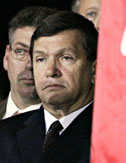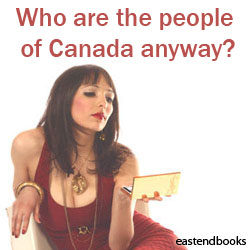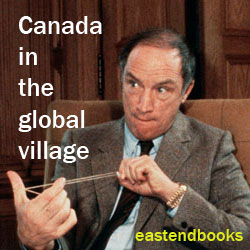Canada moves closer to George W. Bush’s USA .. joining the search for a new progressive alternative
Jan 25th, 2006 | By Citizen X | Category: Key Current Issues
Even if you agree that the Canadian people in their collective wisdom made a shrewd and possibly even cunning decision on January 23, from one end of the ideological spectrum there was also an inevitable sadness. Say whatever else you like, Canada has now lost its quiet distinction as one North American place where some version of the progressive cause has enjoyed practical political ascendancy in the troubled early 21st century.
A particular strange irony in this sad fate is that it was in part engineered by Canada’s theoretically most progressive political party. On the brighter side, the country has an ostensibly fragile new Conservative minority government, dependent in part on this same most progressive party. But Jack Layton’s 29 New Democrats still cannot give Stephen Harper’s Conservatives even a bare majority in Parliament. What the broader cause of progress has gained is vague at best. And, in Canada as in the United States, just what constitutes the progressive alternative to the conservative agenda is now more murky and harder to see.
Is some new kind of Canadian conservative dominance in the wings?
 As the defeat of the Martin Liberals in Canada clearly enough suggests, the idea that the conservative Stephen Harper will just be a Canadian clone of the conservative George W. Bush in the USA is almost certainly too simple-minded. But the fundamental point here is not really that over the more recent past Mr. Harper has moved towards some uniquely Canadian conservative brand.
As the defeat of the Martin Liberals in Canada clearly enough suggests, the idea that the conservative Stephen Harper will just be a Canadian clone of the conservative George W. Bush in the USA is almost certainly too simple-minded. But the fundamental point here is not really that over the more recent past Mr. Harper has moved towards some uniquely Canadian conservative brand.
Even in the United States many conservatives have increasingly come to see that whatever it is Mr. Bush the Younger is trying to do is just not working. In many ways the side of Mr. Harper that has been freshly embraced by various old and new Canadian establishments over the past few months seems more like the kind of US conservative alternative to George W. Bush envisioned, e.g., by David Brooks of the New York Times (and The News Hour on PBS TV).
A case in point is the gratuitous but arguably wise enough editorial advice offered to “prime-minister-elect” Harper right after his election, by the Globe and Mail in Toronto.
Now that Mr. Harper has brought the West in to the federal corridors of power at last, advice from the Globe and Mail in the old TorontoOttawaMontreal triangle is probably not going to be carrying quite the same weight it used to. But unlike in the election of 2004 Canada’s self-proclaimed “national newspaper” did endorse the Conservative “time for a change” theme in 2006. And no doubt in its own view that has helped Mr. Harper to become prime minister too.
As the Globe and Mail sees it, Stephen Harper is “the most conservative figure to be elected prime minister in living memory … His roots are in the western populist tradition of the Reform and Alliance parties. ” But he “says he has evolved … It is up to him now to prove it.”
Canadians, the Globe and Mail believes, “did not endorse neo-conservatism when they elected him last night … They voted for change and renewal in Ottawa. Mr. Harper ran his election on a moderate Conservative platform.” And “if he can show that his evolution from angry neo-con to mainstream conservative is real, Mr. Harper will make an excellent prime minister.”
Time will tell whether or not Stephen Harper continues to evolve in the “mainstream conservative” direction many of his newfound old establishment supporters are hoping for. Sceptics will continue to stress that just a bit better than one-third of the electorate actually voted for him on January 23, 2006. And if you look at the geography of the new ridings he won east of the Manitoba-Ontario border, it is easy enough to suspect that his “populism” remains more attractive to those who vote for him than it does to the Globe and Mail.
Yet take a look at the TV clips of the new 46-year-old prime-minister-designate walking his two young children to school in Ottawa. And it is not too hard to imagine that if Stephen Harper does somehow manage to make it seem that he is some new kind of mainstream conservative – a conservative alternative to George W. Bush in the land of the giant next door – he could easily enough win a clear governing majority of seats in Parliament, in another Canadian federal election some 18 months to two years down the road. (Especially when you remember that in the current strange structure of Canadian federal politics, you can win a majority of seats in Parliament with as little as 40% of the cross-Canada popular vote.)
The new dysfunctional organization of the progressive cause in Canada …
 All this has to be especially galling at the progressive end of the ideological spectrum in Canada today. It all too lamentably underlines just how much closer the 2006 Canadian federal election has brought the progressive cause in Canada to the sorry state of its beleaguered brothers and sisters in the USA.
All this has to be especially galling at the progressive end of the ideological spectrum in Canada today. It all too lamentably underlines just how much closer the 2006 Canadian federal election has brought the progressive cause in Canada to the sorry state of its beleaguered brothers and sisters in the USA.
Especially for mere progressive voters in Canada – uninvolved and largely uninterested in the traditional internecine warfare of the activist left – the federal election of 2006 must seem close to astonishing.
According to the latest reports, 47.7% of the electorate voted for the Liberals to the left and the New Democrats still further left, taken together, while only 36.3% voted for the Conservatives to the right. And yet Canada now has a new Conservative government – led by quite a smart man in his mid 40s, with a rather clear earlier track record as a mindless right-wing ideologue of quiet but resolute passion, however more “evolved” he may or may not be today.
If you further add the 10.5% of the total Canadian vote won by the sovereigntist Bloc Quebecois in Quebec to the progressive ranks here, the picture becomes still more astonishing. (And, allowing for the usual ideological ambiguities of Canadian politics, the BQ is to no small extent the francophone analogue of the NDP in anglophone Canada – even if its immediate historical roots also lie in Brian Mulroney’s “beau risque” Progressive Conservatives of 19841993.)
And then there is the (only equally ambiguous) case of the sort-of rising Green Party (which won 4.5% of the total Canadian vote in 2006), along with such miniature exotica as the Progressive Canadian Party, the Marxist-Leninist Party of Canada, the Marijuana Party, the Communist Party of Canada, and the First Peoples National Party of Canada. On any fair and objective overall collation of the total vote, at least more than 60% of the Canadian electorate voted for one or another form of progressive political party on January 23, 2006. And yet Canada still now has a new Conservative government, etc (already warmly congratulated twice in two days at Bush administration press conferences in Washington).
What did happen to Canadian politics in 2005 anyway?
 Well, what is wrong with this picture – from the progressive end of the spectrum at least? The clear enough first point seems to be that the 2006 Canadian federal election has shown how in Canada, as in the United States, the right is now just that much better organized than the left. (Even allowing for the left’s traditional attraction to ideological disarray on principle.)
Well, what is wrong with this picture – from the progressive end of the spectrum at least? The clear enough first point seems to be that the 2006 Canadian federal election has shown how in Canada, as in the United States, the right is now just that much better organized than the left. (Even allowing for the left’s traditional attraction to ideological disarray on principle.)
And then it also seems clear enough that in the 2005-2006 Canadian federal election campaign both the Liberals and the New Democrats were finally too much more concerned about the futures of their own political organizations than either the wider progressive cause they are both supposed to be serving, or even the progressive-majority people of Canada at large.
One effective way of beating back Stephen Harper’s nasty-minded right-wing assault on Ottawa, even in the midst of the hyper-inflated Quebec sponsorship scandal, was clearly enough shown in the spring of 2005. And it started with an informal alliance between the Liberals and the New Democrats, which tilted the Liberal budget somewhat to the left.
But then, it seems from afar, NDP leader Jack Layton started trying to play a stronger hand with the Liberals than he actually held. And then the Liberals seem to have decided they could probably win their own 40%-popular-vote majority government in Ottawa at the next election, all by themselves. And then the spurned New Democrats started toying with the idea of joining the Conservatives and the BQ in bringing the Liberal minority government down.
Even at this stage, the New Democrats held out a compromise date for an early fresh election to their former Liberal allies. But by this time the Team Martin Liberals had passed into their most traditional arrogant mode and would not hear of it.
So Jack Layton’s New Democrats finally joined Stephen Harper’s Conservatives and Gilles Duceppe’s Bloc Quebecois to bring the Liberals down, and precipitate a fresh election. And in doing so they helped legitimize the right-wing Conservatives in the eyes of a strategic moderate section of the electorate, and set the stage for the election of the fragile Conservative minority government on January 23.
Down the road … 2008 and beyond (in Canada as well as the United States?) …
 So, many ordinary progressive voters of all potential more exact persuasions are bound to be wondering, what happens on this broad philosophical front in Canada now?
So, many ordinary progressive voters of all potential more exact persuasions are bound to be wondering, what happens on this broad philosophical front in Canada now?
In the wake of Paul Martin’s sudden “class-act” resignation as leader of the Liberal Party of Canada, the obvious first point here is that there will soon enough be a new Liberal leadership race – albeit without any obvious new messiah in view. The people of Canada may have now given two strong hints that Canadian politics really does have to start to change, in some big enough ways. But the old inward-looking habits of their professional party politicians will no doubt die hard, if at all.
Meanwhile Jack Layton’s 29 New Democrats of 2006 (well yes, nicely up from a mere 18 at the dissolution of the old 38th Parliament, but …) may or may not be trying to figure out how to co-operate constructively with Stephen Harper’s new fragile Conservative minority government, without looking altogether in the wrong box, in the eyes of their progressive supporters. (And already voices from within Mr. Layton’s own party are daring to question the wisdom of what he and his advisers have done over the past several months.)
Yet surely what has just happened to the wider progressive cause in Canada also begs some kind of deeper and more profound thought about the future – of both the Liberals and the New Democrats?
(And, as pleasantly surprising and encouraging as the 10 new Conservative seats in Quebec are, there is really no more in the 2006 election than there was in 2004 to say that “the traditional two-party system” has returned. There is still nothing to suggest that the Bloc Quebecois or the New Democrats – or even the Green Party for that matter – are going to go away soon. Some New Democrats even seem to have been dreaming lately that they might replace the Liberals, which then still won 30.2% of the popular vote, to the NDP’s 17.5% – the two of which together add up to a nice number, but neither of which is altogether impressive by itself.)
You cay say, truthfully enough, that (ideally) constructive conflict along the progressive-conservative ideological spectrum is far from the only important part of any functional democratic politics today. And this no doubt is and has always been especially true in Canada.
It may even be that Prime Minister Stephen Harper’s most important contributions to Canadian development – along with those of almost everyone else in the new 39th Parliament – will have more to do with what Paul Martin has called the current “structural” problems of modern Canadian nation-building, than with any form of more global ideological debate about progressive and conservative agendas for an increasingly inscrutable social and economic future. (And that could arguably be the best of all the possible worlds that may or may not finally grow out of the 2006 Canadian federal election.)
Yet if Mr. Harper’s new fragile minority government does somehow manage to last as long as two full years, that could put the next Canadian federal election into the same year as the 2008 Presidential election in the land of the giant next door. And, as Stephen Harper is also bound to be reminding Canadians, one way or another, there is no escaping the sheer geography of Canada’s location, location, and location in the North American neighbourhood..
The United States of America continues to be deeply involved in what certainly looks like some kind of very important political debate about progressive and conservative agendas for the wider social and economic future.
Canada especially – and increasingly along with the rest of the global village – has never been able to finally avoid such neighbouring debates in the past. And there are many reasons to believe that they will mark its future even more starkly, no matter how much stronger and independent the true north becomes in its own right (as even Mr. Harper says he deeply wants to see too: “Stand Up for Canada” may well have been the 2006 Conservative slogan that worked best).
 Some old and musty but still compelling enough words written by George Brown, a founder of both what is now the Globe and Mail in Toronto and the modern Liberal Party of Canada, seem to have a few intriguing echoes today. They were first set down in the middle of the 19th century, when the historic debate on the future of African American slavery was approaching its boiling point: “We, too, are Americans. On us, as well as on them, lies the duty of preserving the honour of the continent. On us, as on them, rests the noble trust of shielding free institutions.”
Some old and musty but still compelling enough words written by George Brown, a founder of both what is now the Globe and Mail in Toronto and the modern Liberal Party of Canada, seem to have a few intriguing echoes today. They were first set down in the middle of the 19th century, when the historic debate on the future of African American slavery was approaching its boiling point: “We, too, are Americans. On us, as well as on them, lies the duty of preserving the honour of the continent. On us, as on them, rests the noble trust of shielding free institutions.”
Progressive voters in Canada can only hope that some of their more influential progressive politicians – in both the Liberal and New Democratic parties and elsewhere – start thinking a bit harder and longer about this kind of issue, in time for the next federal election. Otherwise, who knows? Stephen Harper just may be starting a rather longer career as prime minister of Canada than the actual democratic majority of Canadians would really like to see.

